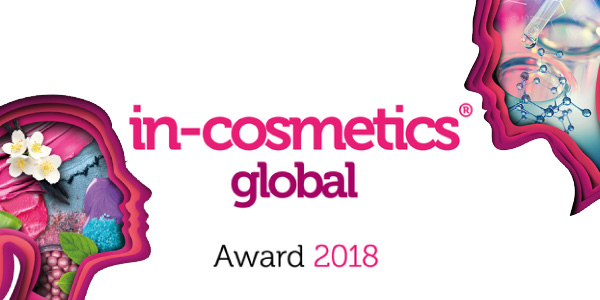While a lot of events are being held around the world for cosmetic ingredients suppliers, it is in-cosmetics global that everybody is looking at as an industry compass. This trade show is a popular place for suppliers to introduce their newest products and technologies, and based on the industry’s reaction and interest, we can define where the market will be headed in the next year.
Looking into the list of award winners, the industry is still to be driven by green, skin protection, and skin microbiome-related ingredients. Most of these areas are not new; for example, the green mega trend has been driving the industry for over two decades, but is still a focal point for ingredients development in 2018.
Green, greener, greenest
If one was thinking the natural trends was slowing down in the personal care industry, a quick look at the winners list of the Best Ingredient Awards 2018 should be sufficient to prove the contrary. In the active ingredients category, all three Winners (Gold, Silver, and Bronze awards for respectively Mibelle’s MossCellTec No. 1, Rahn’s Seboclear-MP, and Silab’s Ecobiotys) are from natural origins. The same situation happens with functional ingredients with Evonik’s RHEANCE Glycolipids, Nikko Chemicals’ AUROVISCO CS, and Vantage’s Desert Milk. The “green ingredients award” category is obviously not enough anymore for green products and they are winning across all categories.
While their natural source is often a major claim, many new green ingredients also claim to be fully capable replacements for traditional synthetic ingredients. This is most notably true for the functional ingredients category where natural alternatives are being developed in all functional groups. From surfactants to emulsifiers, through rheology modifiers, ingredients suppliers are focusing on giving R&D scientists natural options for their formulations.
Decades of monitoring the ingredients market have shown us, that for a given function, the switch from usually preferred synthetic ingredients to their natural alternatives is never a fast-paced process unless regulations got in the way. It would be therefore unwise to predict a rapid and unambiguous switch to natural ingredients. However, it is now obvious that formulators have more choices than ever when it comes to their ingredients. While first iterations of some natural alternatives had some drawbacks, such as odor, color, stability, or cost, compared to synthetic ingredients, this gap is now closed.
The protectionist temptation
The green trend has a lot to do with one of the most important societal topics—environment protection. Interestingly, another major trend that showed continuous development at in-cosmetics this year has been protection from the environment.
Whether it is sun protection, blue-light protection, urban stress protection, or pollution protection, many newly-developed ingredients are including in their claims some kind of skin or hair protection. The gold award winner in the trend-defining category of active ingredients is a good example. MossCellTec No. 1 from Mibelle Biochemistry not only claims that it “supports the skin’s adaptation to climatic stresses,” but also “strengthens skin against urban aggressors and climatic changes” through an innovative mode of action involving gene activation.
In the last few years, we have seen many active ingredients promoting skin protection against various aging factors and it has become a long-living trend in the industry. At first, skin protection actives were often “rebranded” film formers or anti-oxidants, but suppliers are now trying to find an innovative action path to answer what seems to be a here-to-stay expectation for consumers.
Bringing back the balance in the skin microbiota
Next to protection claims, ingredients claiming activity at the skin microbiota level are another group of ingredients to see their importance strengthening throughout the last few years. The Bronze-awarded Ecobiotys from Silab is such an example. Many other examples were presented at the show, such as Corum’s Apobac claiming to harmonize skin microorganisms and showing that research in the area of skin microbiome is still a focus for ingredients suppliers.
As an innovation-driven market, it is essential for ingredients marketers to be able to identify “the next big thing.” Coming out of the 2018 edition of the global in-cosmetics tradeshow, it seems the next big things are focused on product innovation within already existing trends.
Kline conducts in-depth market research in the market for Personal Care Ingredients. Designed to serve as a one-stop solution for ingredient suppliers in competitor analysis and benchmarking, and acquisition screening due diligence, this study uncovers the market potential of over 200 ingredients and provides supplier sales by ingredient type, application, and region. VIEW BROCHURE >
We also cover the market for Specialty Actives in Personal Care. This study analyzes market size and potential of the botanical actives, biotechnology products, marine ingredients, proteins and peptides, enzymes and coenzymes, and synthetic actives in Brazil, China, Europe, and the United States. VIEW BROCHURE >

